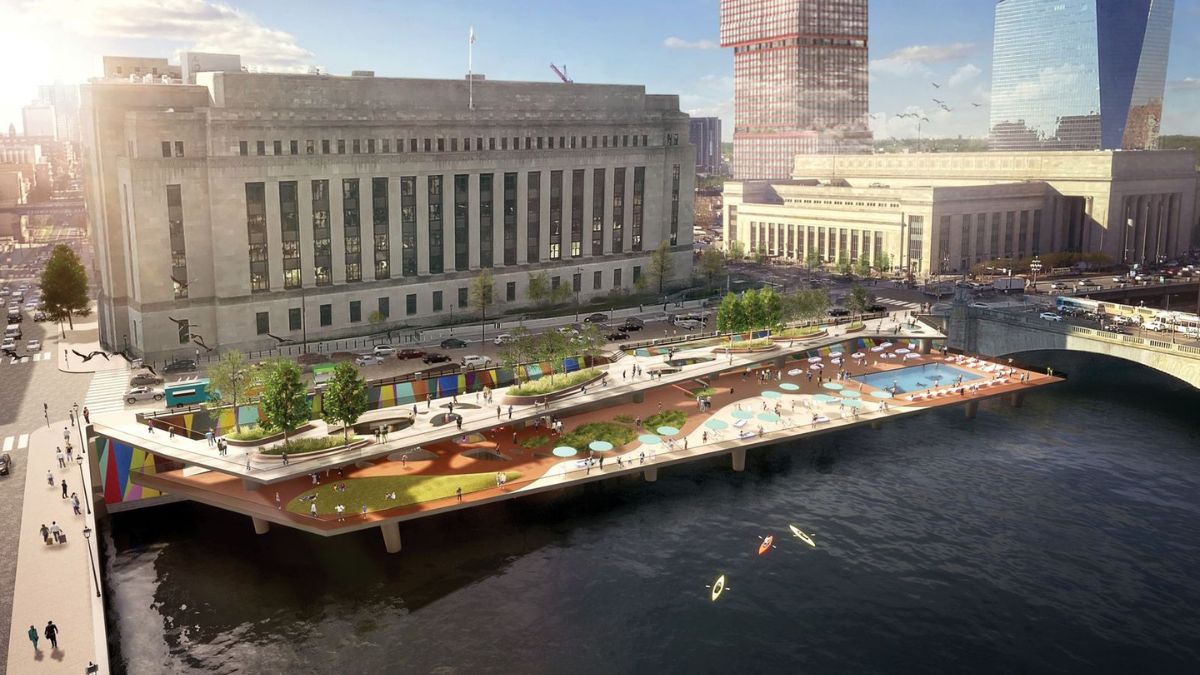When Superstorm Sandy damaged the beaches in the Delaware River bay, it left horseshoe crabs without a place to nest. The loss of spawning grounds dramatically worsened the plight of an endangered shorebird which depends on horseshoe crab eggs for its survival during spring migration.
The Delaware Estuary is home to the largest population of horseshoe crabs in the world. Its beaches are the ancient arthropods' spawning grounds, which attract nearly 90 percent of the entire population of the American subspecies of red knot shorebirds (Calidris canutus rufa).
Those beaches are a critical stop point for the red knots in their 9,300 mile migration from the tip of South America to summer breeding grounds in the Arctic. There, the birds gorge on horseshoe crab eggs for a few weeks to refuel for the final leg of their epic journey.
Without feeding on horseshoe crab eggs, red knots would be unable to complete their migration to the Arctic, explained Dr. Lenore Tedesco, Executive Director for the Wetlands Institute, in Stone Harbor. Other shorebirds, like the ruddy turnstone and sanderling also depend on horseshoe crab eggs for their survival.
The institute held its first annual Spring Shorebird and Horseshoe Crab Festival last weekend in Middle Township, New Jersey to highlight the fragile, intrinsic relationship between the two species. Planned in advance of Sandy to promote conservation of horseshoe crabs and red knot shorebirds, the festival's message gained urgency in the wake of the October super storm.
"It turned out to be a good year to do this," said Tedesco.
The three-day festival was spread out over several locations - the institute, Stone Harbor Point and seven miles across the Cape May Peninsula at Cooks and Reeds Beaches on the Delaware Bay - where attendees learned about the bay's delicate ecosystem through lectures, salt marsh trail walks, shorebird banding, plus guided beach walks to view shorebirds and spawning horseshoe crabs.
Local
Breaking news and the stories that matter to your neighborhood.
Fewer crabs, fewer birds
Before the 1990s, the red knot population was thought to number 150,000. Today, there are an estimated 30,000 red knots which, as of February 2012, are on New Jersey's endangered species list, Tedesco said.
Red knots declined because in the 1990s the horseshoe crab population was dramatically reduced as a result of over harvesting for use as bait and fertilizer. In 1996 more than two million were killed through commercial harvest.
Horseshoe crabs also play an important role in the biomedical industry, where Limulus amebocyte lysate (LAL) from their blood is used to detect bacterial contamination. The animals are bled and then released, but it is estimated that between 10 to 15 percent (20,000 to 37,500) do not survive the blood procurement process.
In 2008, New Jersey issued a moratorium on the harvest of horseshoe crabs until migratory bird populations are restored. However, other Mid-Atlantic states have not implemented such protections. Because horseshoe crabs don't spawn until they are 10 years old, it takes time for populations levels to increase, Tedesco noted.
Sandy's impact
If over harvesting the horseshoe crab wasn't enough, then came Superstorm Sandy. What had been a gradual erosion of the horseshoe crab habitat, was suddenly greatly accelerated by the hurricane, Tedesco said.
Between the years 2006 to 2012, up to 70 percent of the horseshoe crab habitat had been lost. Researchers do not know exactly how much of that loss was directly due to Sandy. "But it was significant," she asserted.
Delaware Bay beaches lost around three feet of vertical sand when it was moved inland above the high tide line, Tedesco said. Making matters worse, was the man-made debris the storm exposed. Not only are the horseshoe crabs unable to dig into the rubble to lay eggs, but they get trapped behind old bulkheads and die.
Restoration efforts
Sandy was the impetus behind an extraordinary team effort to restore the horseshoe crabs' spawning grounds before the peak of reproductive activity during the new and full moons of May and June. Tedesco says the U.S. Army Corp of Engineers originally predicted the restoration would take at least two years to complete.
Fearing the devastating effect that kind of wait could have on the imperiled red knot population, environmental agencies and conservation groups sprung into action to beat the clock.
The $1.4 million restoration effort replenished 23,000 cubic yards of sand on five beaches - Kimbles, Cooks, Reeds, Pierces Point and Moores - covering a 2.5 mile stretch along the Delaware Bay coastline.
Debris, bulkheads and pilings were also removed as part of the project, including 50 tons of rubble off of Reeds beach alone, Tedesco elaborated. The emergency restoration is now mostly complete, with some work on Moores Beach remaining in part because the road needed to be rebuilt after Sandy, she said.
Because of the rapid response, Tedesco says spawning for the horseshoe crabs appears to be going well. Spring migration of shorebirds has also begun, with a third of the total expected having recently arrived. "We have a very positive feeling about it," she said.



